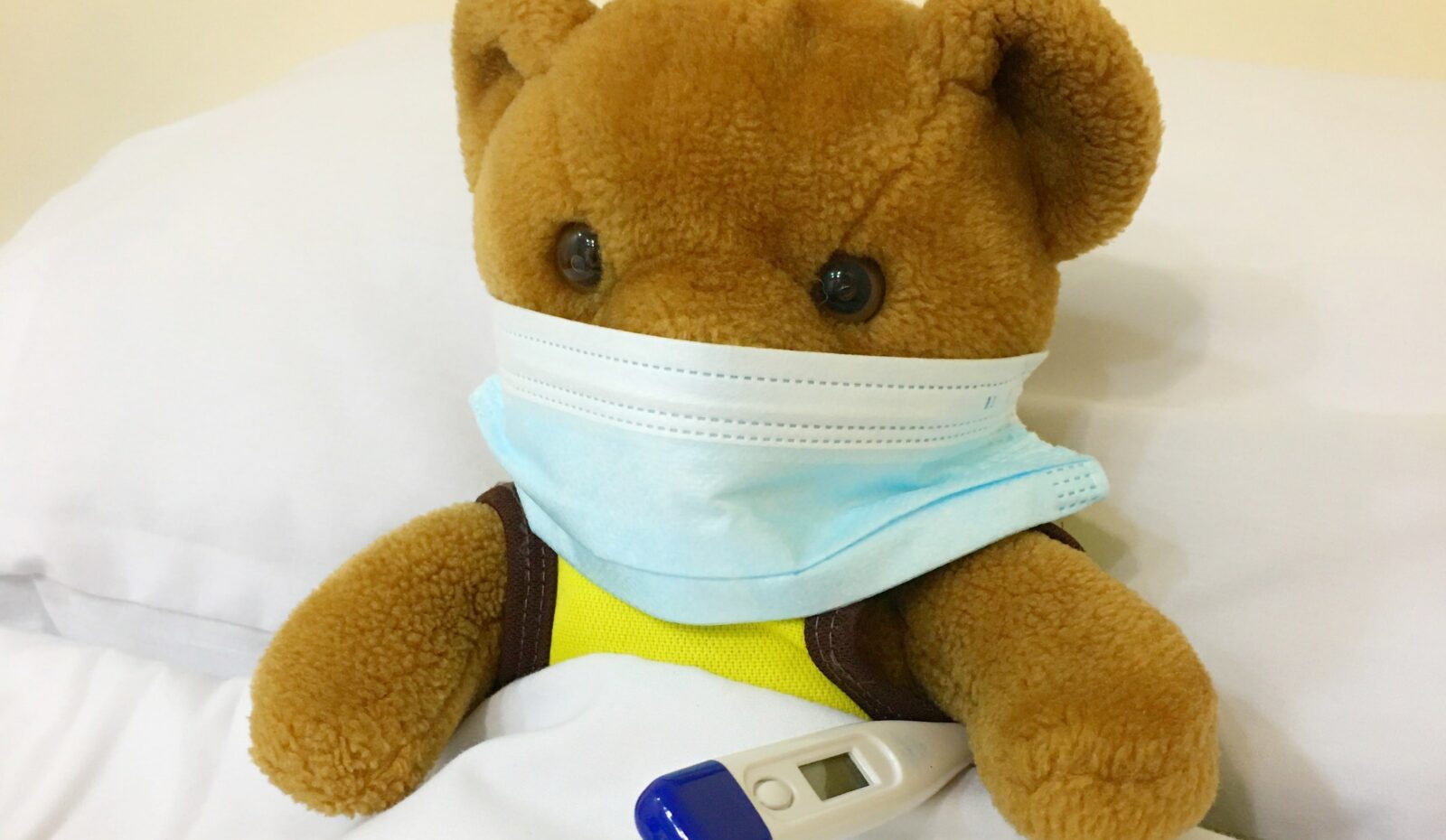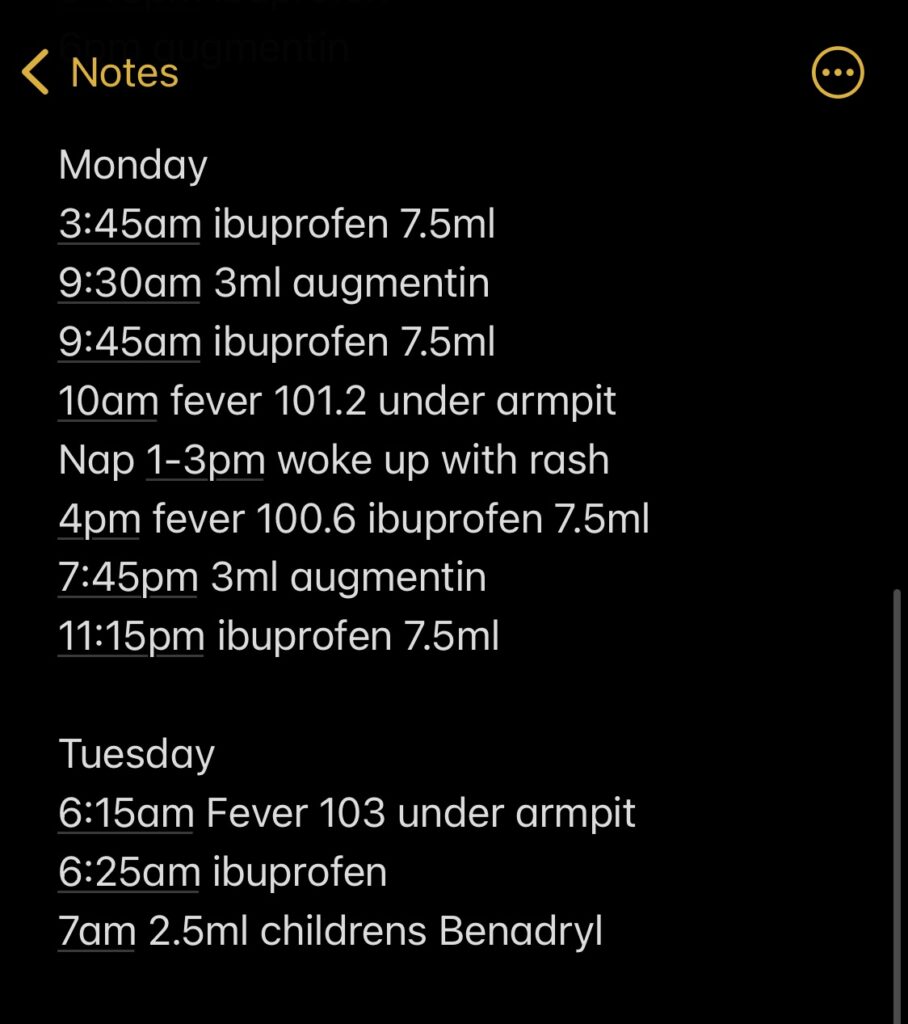Taking your child to the emergency room is one of those unforgettable rites of passage as a parent. A fun morning at the playground can take a turn when a kid falls from the monkey bars. An endless evening with a feverish baby can turn into a middle-of-the-night drive to the hospital. No trip to the emergency room is stress-free. However, there are ways to make it stress-manageable. Here are a few things I’ve learned by navigating ER visits with kids:
What To Do Now (Before You Have An Emergency!)
Before there’s an emergency, put all your important medical information together:
- Insurance card
- Pediatrician’s name, phone number, address
- Pharmacy name, phone number, address
I keep my insurance card in my wallet, but I also have a picture of it in my phone. I keep pediatrician and pharmacy information in my phone as well. If you have a partner, make sure they have all this information whenever they might need it.
While you’re at it, research how your insurance plan covers emergency room visits. Nerves are short and tension is high when you check in at the emergency room. You’ll have to provide your insurance information right away and answer several questions. Some emergency rooms even charge you before you see any medical professionals. If you know how your insurance covers these visits, you’ll be less agitated in the moment.
Before You Leave For The ER (Or When You’re Not Sure You’ll Go)
In many situations, there’s a period of time when you’re taking care of a sick kid or you’re monitoring a child after an accident. You’re not sure if you’ll even need to go the emergency room. When you’re in this period of limbo, there are a couple of things you can do that will make things much easier later.
Track Symptoms & Medications – In Detail
When possible, keep track of medical symptoms and their timing on paper or in a note-taking app on your phone. This will help you remember details and make it easier to share information with your doctor and other medical professionals. The progression of symptoms over time is often the information they need most.
For example, document your child’s temperature including the date and time to see if it’s getting better or worse; list medications you’ve given, how much, and when; write down symptoms; and note changes in symptoms.
I often think I’ll be able to remember every detail, but it’s easy to get overwhelmed and forget things, especially if an illness is progressing over a few days.
Call Your Pediatrician
If you have time, it can be worth calling your pediatrician before heading to the ER. They can call the ER and prepare them for your arrival. This might involve giving the ER staff instructions for what to do when you get there. This doesn’t necessarily mean you won’t have to wait (and ER waits are LONG). However, it might save the nurses and doctors time once they see you.
What To Bring To The Emergency Room
If you’ve never been to the emergency room before, one thing that might catch you by surprise is how….long….you…have….to….wait. After you check in, it might take hours before your child is examined. You’ll likely be spending a long, long time in the waiting room. After being examined, if your child needs any tests, bloodwork, scans, or Xrays, you’ll have to wait again for those to be coordinated and scheduled.
These things can help you stay sane, calm, and (more) comfortable as you pass the time:
- Insurance Card, Pediatrician information, pharmacy information
- Masks – Emergency rooms at this time are still requiring everyone to wear them.
- Phone and Phone charger
- Headphones
- Snacks – for both you and your child. Note: There might be designated areas where you can eat.
- Bottles of water
- Your child’s comfort items such as a stuffed animal or blanket
- Sweatshirt – for both you and your child. Waiting and exam rooms can be cold! A zip-up is great since you can take it off and put it on your child easily. It also helps if you have to leave one arm out for any reason.
- Paper and Pen/Pencil – for taking notes and for entertainment. Drawing, writing messages back and forth, and playing Hangman are simple ways to keep busy.
- Your notes if you took them on paper
- Deck of cards, books, and/or tablet to help you pass the time
- Any over the counter or prescription medications you may need for yourself
- If you wear contact lenses, rewetting drops or eyeglasses
Tips For Staying Calm & Supporting Your Child During Your ER Visit
There’s a lot that happens during your child’s ER visit – and you’re likely already tired, worried, and under stress. Here are some things to keep in mind to help yourself – and your child – through the visit:
Take Notes & Ask Questions
Take notes when you speak to doctors, nurses, and all medical professionals. Handwriting them is faster for me but sometimes I transfer notes to my phone after the staff leaves the room and I have more time. Then the notes are in my phone, and I don’t have to worry about losing scraps of paper. Taking notes helps me remember information as well as share information to other doctors and nurses in an efficient and comprehensive way.
Make sure you understand all the information you’re hearing by restating it to the doctor or nurse. I find that when I try to repeat the details, I realize I don’t actually understand or I’m not really following. It’s similar to when I’m trying to absorb driving directions… Remember it’s okay to ask questions and to ask for information to be clarified or repeated—and repeated again until you completely understand. You can also ask for medical staff to slow down.
An example of restating: Can I make sure I understand? You’re going to get some bloodwork. If the results come back (X), then you’re going to give the medicine (Y). Is that right?
Be Patient With Hospital Staff
Try to have as much patience with medical staff as you want them to have with your child. It is very stressful to have a child in the emergency room. And… it is very stressful to work in an emergency room. Things take a long time. Priorities shift from moment to moment. Emotions run high. Remembering that everyone has the same goal—to take the best care of your child—can help you stay calm. When you’re calm, it’s easier to communicate clearly and make sure your child is given the care they need.
Insurance Coverage Is Confusing (It’s Not Just You)
Okay, this one isn’t a tip, exactly, but a truth that may validate your experience: insurance coverage is confusing! It doesn’t make any sense to me but not every medical professional in a hospital accepts the same insurance. For example, if your child needs stitches on the face and the hospital suggests bringing in a specialist or plastic surgeon, it is okay to ask if they are covered by insurance to help you make decisions.
And Finally, Breathe
Make sure you’re meeting your own basic needs as you navigate an ER visit with your child. Slow deep breaths can calm your nervous system. The best way to take care of your child during these nerve-wracking hours is to stay as calm, comforting, and clear-headed as possible.
What To Do After Your ER Visit
After your emergency room visit, be sure to:
- Call your pediatrician. Tell them your child visited the ER and inform them if any medication or treatment was given so your child’s medical records can be updated.
- Breathe again. You did it. Like childbirth or the four-month sleep regression or your first plane ride with a toddler, you made it through.
Photo by Kristine Wook on Unsplash




Leave a Reply